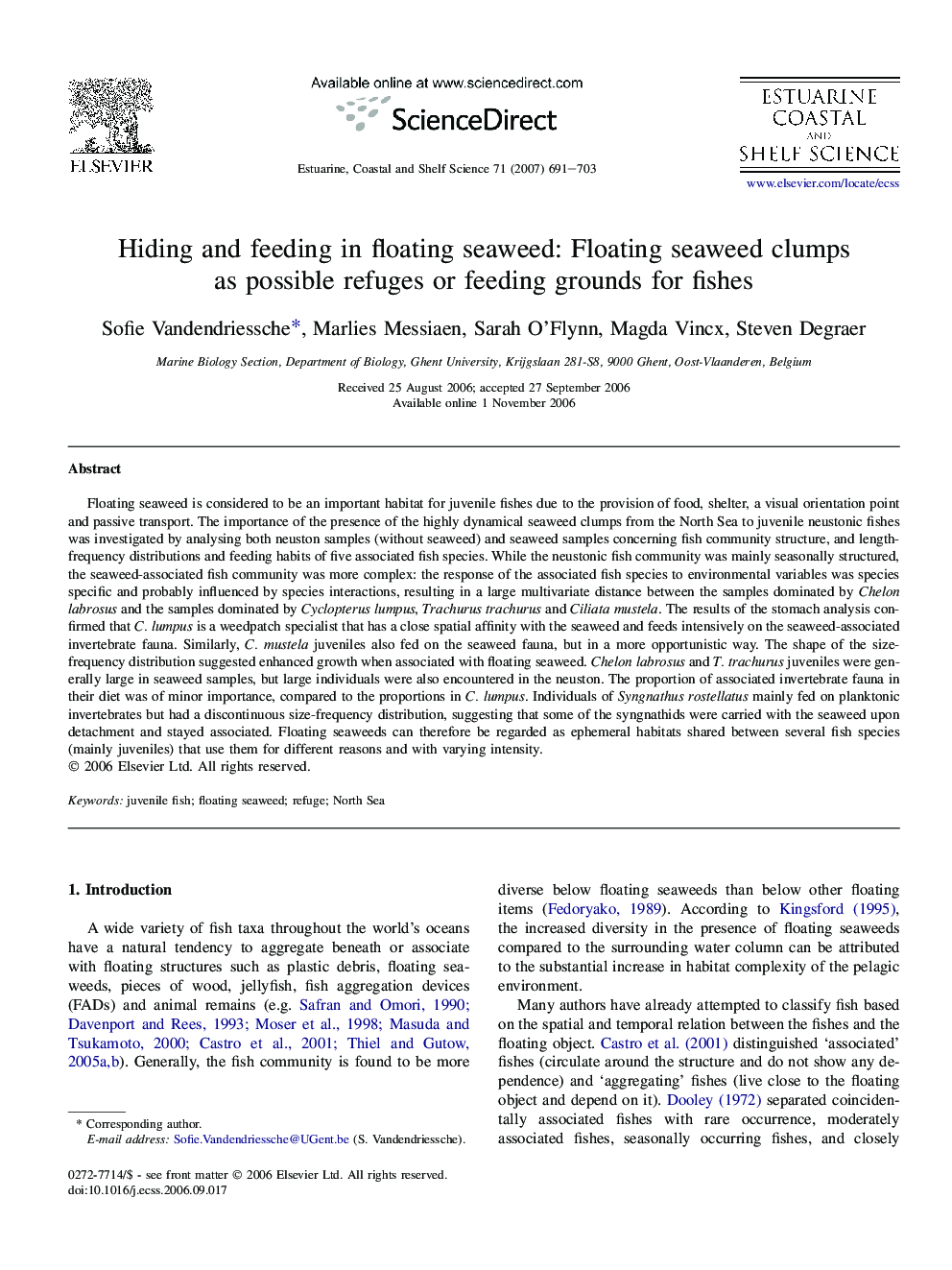| کد مقاله | کد نشریه | سال انتشار | مقاله انگلیسی | نسخه تمام متن |
|---|---|---|---|---|
| 4542445 | 1626706 | 2007 | 13 صفحه PDF | دانلود رایگان |

Floating seaweed is considered to be an important habitat for juvenile fishes due to the provision of food, shelter, a visual orientation point and passive transport. The importance of the presence of the highly dynamical seaweed clumps from the North Sea to juvenile neustonic fishes was investigated by analysing both neuston samples (without seaweed) and seaweed samples concerning fish community structure, and length-frequency distributions and feeding habits of five associated fish species. While the neustonic fish community was mainly seasonally structured, the seaweed-associated fish community was more complex: the response of the associated fish species to environmental variables was species specific and probably influenced by species interactions, resulting in a large multivariate distance between the samples dominated by Chelon labrosus and the samples dominated by Cyclopterus lumpus, Trachurus trachurus and Ciliata mustela. The results of the stomach analysis confirmed that C. lumpus is a weedpatch specialist that has a close spatial affinity with the seaweed and feeds intensively on the seaweed-associated invertebrate fauna. Similarly, C. mustela juveniles also fed on the seaweed fauna, but in a more opportunistic way. The shape of the size-frequency distribution suggested enhanced growth when associated with floating seaweed. Chelon labrosus and T. trachurus juveniles were generally large in seaweed samples, but large individuals were also encountered in the neuston. The proportion of associated invertebrate fauna in their diet was of minor importance, compared to the proportions in C. lumpus. Individuals of Syngnathus rostellatus mainly fed on planktonic invertebrates but had a discontinuous size-frequency distribution, suggesting that some of the syngnathids were carried with the seaweed upon detachment and stayed associated. Floating seaweeds can therefore be regarded as ephemeral habitats shared between several fish species (mainly juveniles) that use them for different reasons and with varying intensity.
Journal: Estuarine, Coastal and Shelf Science - Volume 71, Issues 3–4, February 2007, Pages 691–703